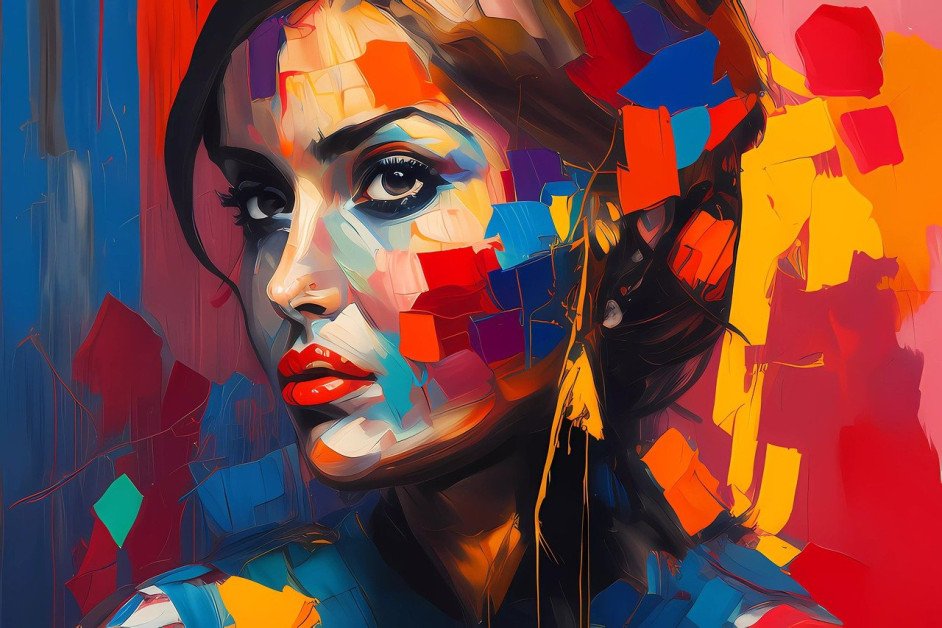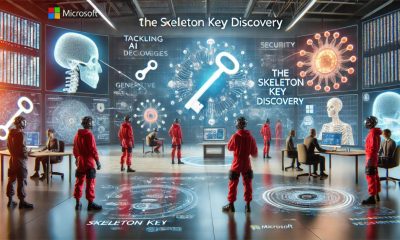Artificial Intelligence
AI in Media: How Is Generative AI Revamping the Media & Entertainment Industry

In 2021, OpenAI introduced DALL-E, a deep learning model that can generate realistic images from text prompts. This was the first widely recognized and commercial Generative AI tool. Since then, 100s of tools related to Generative AI in media and other domains have been released with applications in all facets, including art, music, marketing, entertainment, etc.
If you are wondering what Generative AI is, let’s discuss it briefly below.
Generative AI – a specialized Artificial Intelligence (AI) domain – uses advanced algorithms to generate realistic text, audio, images, or videos. Most notably, Generative AI dates back to 2014 when GANs (Generative Adversarial Networks) were introduced. GANs were the earliest models that were able to generate lifelike images of humans that never existed. After that, VAE (Variational Autoencoders), Diffusion models, and Transformers models have become the backbone of Generative AI.
Generative AI got a significant spotlight in November 2022 when OpenAI introduced ChatGPT – a Large Language Model (LLM) that can generate human-like text and can have engaging conversations. Just five days after its release, ChatGPT crossed 1 million users.
Let’s discuss how Generative AI models have supercharged the media and entertainment industry.
Generative AI in Media & Entertainment – 4 Major Applications
By 2030, AI is expected to become a 1.5 trillion dollar market, impacting all major industries, including media and entertainment which is at the forefront of this AI impact. For instance, AI in social media, alone, will reach 12 billion dollars in market size by 2031. More and more consumers now prefer to interact with AI-powered chatbots to get instant responses to their queries. And, marketers are more inclined to leverage AI in their advertising campaigns.
Let’s look at some major applications of AI in media.
1. AI-Powered Content Writing
Creative writing is the most celebrated application of Generative AI. LLMs like ChatGPT have entirely removed writer’s block by inspiring new avenues of creativity. Journalists, scriptwriters, social media copywriters, blog writers, and storytellers can use LLMs to create engaging content instantly.
However, AI-based content generation has sparked a debate about whether or not search engines like Google will rank such content. Google recently mentioned its stance that it would rank content according to expertise, experience, authoritativeness, and trustworthiness, irrespective of how it’s generated. But, if someone plans on using AI to manipulate search results, that’s not going to work.
2. AI-Powered Image Generation
Image generation models like Stable Diffusion, DALL-E, and Midjourney can generate high-quality, hyper-realistic images from natural language prompts. In the media and entertainment industry, content creators can use these images in blogs, articles, social media posts, and advertisements. This can not only cut production costs but brings more creativity to an artist’s work. Moreover, these images can be used as input prompts for AI-based video generation.
3. AI-Powered Film Production
Recently, 28 Squared Studios, in collaboration with Moon Ventures, created the short film “The Safe Zone”, written and directed by AI (ChatGPT). ChatGPT provided each character's script, camera positioning, outfits, and facial expressions. The Safe Zone was the first use of AI in filmmaking. In the future, we can expect to see complete films being generated from AI.
The film’s producers say that they created the short film to highlight the collaborative potential between Generative AI and humans, demonstrating how they can work together to produce high-quality content. Additionally, the short film provides a sneak peek into the future of storytelling, offering insight into the harmonious coexistence of humans and AI within the creative domain.
4. AI-Powered Marketing
AI can analyze large volumes of marketing data to validate what works and what doesn’t in the marketing industry. According to a 2023 survey, 73% of marketing executives are using Generative AI tools for B2B and B2C marketing. It can help marketers identify customer behavior and patterns from feedback and generate compelling and engaging text, image, or video content.
Generative AI Videography – A New Era
Many Generative AI models and tools have been released recently that are revolutionizing the field of videography. Some prominent tools are:
- Runway Research created a model called “Gen-2” that can create novel videos from text, images, or video clips.
- In March 2023, Google Research, in collaboration with The Hebrew University of Jerusalem, presented Dreamix, a diffusion-based model that creators can use for video editing and performing text-based motion.
- Nvidia, the American tech company that manufactures and designs GPUs (Graphic Processing Units), introduced its text-to-video model. The model uses Latent Diffusion Models to create high-quality videos.
- Artists are using a combination of these AI videography tools for creating music videos.
By leveraging Generative AI’s video production capabilities, creators can tweak visual aesthetics to create an immersive experience for their viewers.
Embracing Generative AI: One Step at a Time
The output created by Generative AI, especially image and video, lacks perfection. For instance, DALL-E and Stable Diffusion sometimes make garbled faces and missing fingers. Therefore, human input is required to refine and create the final content. Although there are some limitations in Generative AI tools, the pace at which these AI systems are evolving is remarkable.
For instance, Coca-Cola has set a new benchmark for how AI can create engaging ads. Their latest advertisement uses AI (Stable Diffusion), Film, and 3D to create an immersive experience.
Should We Be Worried About Generative AI in Media? – The Risks
Despite Generative AI’s massive advantages like efficiency, personalization, and scalability, there are potential risks and downsides associated with it as well. These are:
1. Job Displacement
According to Goldman Sachs, 300 million jobs will be replaced by AI in 2025. AI has shown the capability for creativity and white-collar jobs previously considered exclusive to humans. If left unchecked, the AI systems can cause a severe economic downturn.
2. Fake Content
In 2018, Filmmaker Jordan Peele and BuzzFeed released a highly realistic deepfake of former U.S. President Barack Obama. The video aimed to raise awareness about the potential misuse of AI. It highlighted how easy it is to use someone’s face and voice to spread false narratives and disinformation.
Recently, in March 2023, AI-generated images of former President Trump restrained by police got viral. The creator Eliot Hughes confirmed that the images were generated using MidJourney V5.
Making pictures of Trump getting arrested while waiting for Trump's arrest. pic.twitter.com/4D2QQfUpLZ
— Eliot Higgins (@EliotHiggins) March 20, 2023
Hence, the use of AI in media can introduce a massive influx of fake content that will be hard to verify and regulate.
3. Intellectual Property & Copyrights
Determining the ownership and rights of AI-generated content is difficult without clear legislation. For instance, due to copyright issues, Getty Images banned AI-generated content from being uploaded on the platform. On top of that, Getty Images sued Stability AI Inc., alleging that they used 12 million images from its database without permission or compensation.
What Lies Ahead?
Generative AI is undoubtedly ground-breaking. It is helping creatives across many industries, especially media, to enhance their creativity and productivity. Though the future of Generative AI is exciting, it is also worrisome.
In March 2023, Elon Musk and 32,000 other technology leaders and AI developers signed a petition aiming to halt the production of AI models stronger than GPT-4 for six months. The idea is to give enough time to governments and policymakers to build robust AI governance frameworks that can mitigate any AI risks without stifling innovation.
Exciting times ahead! For more AI-related content, visit Unite.ai.












